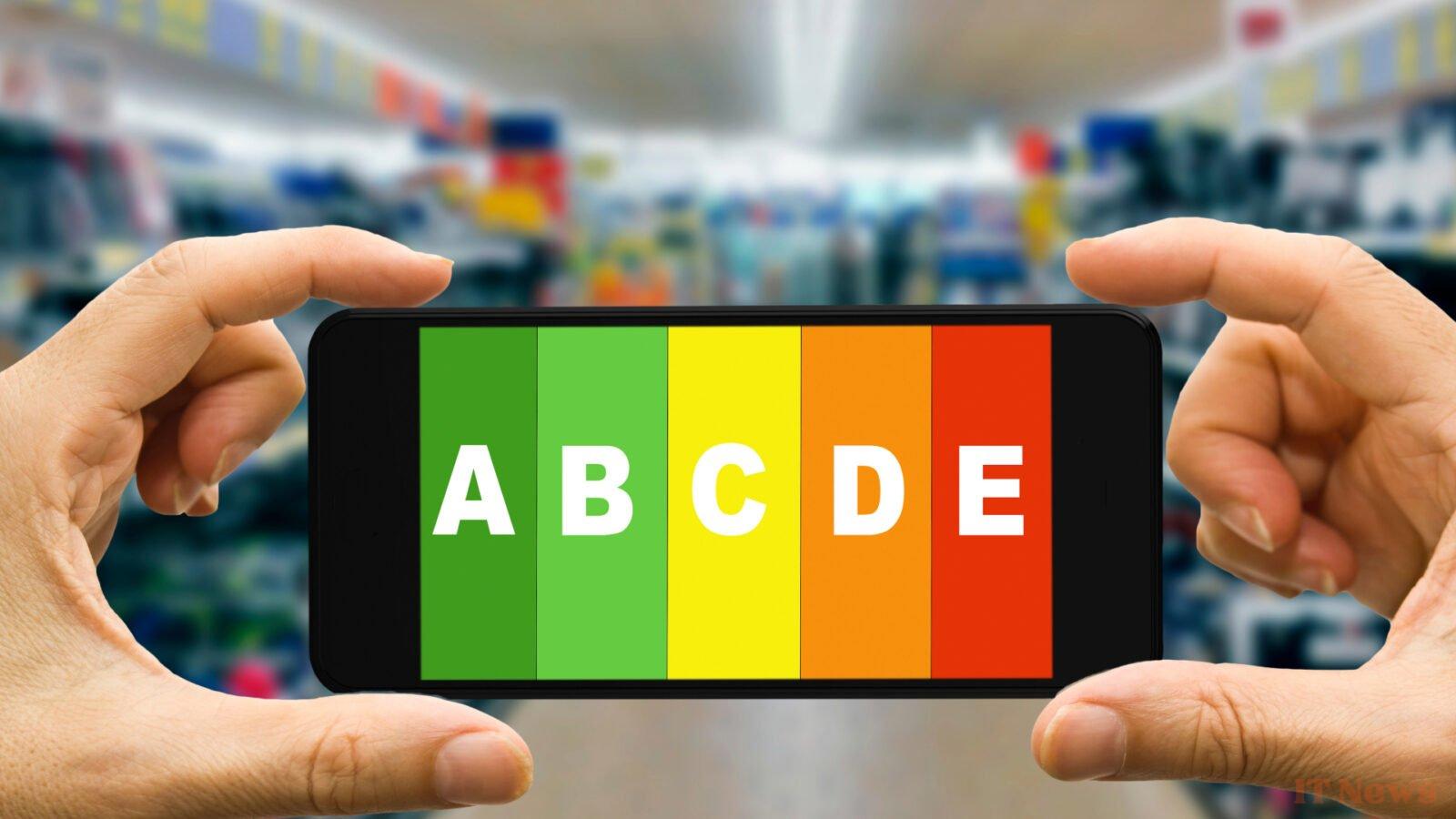The objective of this new measure is clear: to encourage transparency, promote sustainable products, and equip consumers against planned obsolescence.
A new, easy-to-read display to help you make the right choice
From June 20, 2025, all smartphones, traditional mobile phones, and tablets sold in the European Union will have to display a standardized energy label. It will contain a series of key indicators, classified from A (excellent) to G (poor), including battery life, the number of guaranteed charging cycles, drop resistance, repairability, and the waterproof rating (IP).
In addition to this summary rating, a QR code will link to the European public database EPREL, where users will be able to consult the detailed technical data of each model.
This is a small revolution for the high-tech sector, which has until now been relatively unaffected by labeling requirements. found on televisions, refrigerators, and washing machines. From now on, consumers will finally have objective criteria to assess the durability and energy performance of their appliance.
A label... but also strict design rules
This new obligation does not come alone. Alongside labeling, Europe has passed an ecodesign regulation that will impose a set of constraints on manufacturers intended to extend the lifespan of devices and facilitate their repair.
Smartphones and tablets placed on the market must:
- Guarantee at least 800 complete recharge cycles without falling below 80% of initial capacity.
- Offer minimum resistance to drops, humidity, and dust, verified in a laboratory.
- Offer fair access to spare parts for 7 years after the end of marketing, with delivery times set at 5 or 10 working days depending on the part.
- Provide security and system updates for at least 5 years after the model was last put on sale.
- Give independent repairers non-discriminatory access to the tools, software, and firmware needed for repairs.
In other words, the end of the “impossible repair” or the phone becoming unusable due to lack of updates could well be in sight.
Towards a change in the mentality of consumers… and brands?
Behind this regulation is a broader battle: that against software and hardware obsolescence which still too often characterizes the smartphone market. Until now, few manufacturers have provided long-term updates or made spare parts easily available.
With this reform, the European Commission hopes to significantly reduce electronic waste (more than 14 TWh of energy savings anticipated per year by 2030) and encourage a change in consumer behavior. Choosing a device based on its repairability or durability will become easier, and eventually even more important, than simply considering power or design.
Some brands, such as Fairphone or Nokia, which are already focusing on durability and transparency, could do well. Others will probably have to revise their plans.
Implementation from mid-2025
Adopted in August 2023, this dual regulation (EU 2023/1669 for labeling, EU 2023/1670 for ecodesign) will come into force from June 20, 2025 for all new devices put on sale in the EU.
However, it will not apply retroactively to models already on the market or to devices considered hybrid, such as laptops with detachable keyboards or flexible screens. Refurbished smartphones could eventually be affected if specific rules are applied to them in a future regulation.
With this system, the energy label for smartphones should eventually become a new purchasing reflex, just like that for washing machines or televisions.



0 Comments